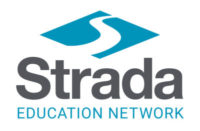Across 50 states, there are 50 different ways in which states allocate special education funding to districts. Click on a metric below for 50-State Comparisons showing how all states approach special education funding. View a specific state’s approach by going to the
state profiles page. See below for a description of each metric in this comparison.
Funding Mechanism: Each state’s funding mechanism can be sorted into one or more of seven categories:
- Multiple Student Weights System
- Single Student Weight System
- Census-Based System
- Resource-Allocation Model
- Reimbursement System
- Block Grant
- High-Cost Students System
Multiple Student Weights System
The most common model for distributing special education funding to districts is through the use of multiple student weights. In the funding formula, students are assigned a different weight or dollar amount based on certain factors. The weights can be assigned based on severity of disability (e.g., mild, moderate or severe); on specific disability (e.g., visually impaired students receive X amount and students with autism receive Y amount); or on the resources that the student receives (e.g., students who are educated in a resource room receive X amount, students who have an aid for part of the day receive Y amount).
Single Student Weight System
Under this funding mechanism, districts receive additional funding for each student identified as having disabilities. The weight or dollar amount is the same regardless of the severity, disability or resources.
Census-Based System
Under a census-based system, the state assumes that each district has the same percentage of students who require special education, regardless of the student count, then applies an additional weight or dollar amount for those students. There are eight states that use a census-based system and the percentage of students who require special education services varies among those states.
Resource-Allocation Model
Under a resource-allocation model, states distribute resources — not dollars — based on the number of identified students who require special education services. For example, the state would provide one teacher and one instructional assistant for every X number of students who require special education services and one psychologist for every Y number of students who require special education services.
Reimbursement System
There are seven states that use a reimbursement model for special education funding. Under this model, districts submit actual expenditures to the state, and the state reimburses districts for all or a portion of their actual spending.
Block Grant
Under a block grant model, the state gives the districts a grant to use on special education services. The block grant can be calculated based on past years’ spending on special education services.
High-Cost Students System
Because of the financial burden that special education services can impose on a district, some states provide additional funding for very high-cost students. This is often coupled with another funding mechanism to help offset that cost of some services. For example, while districts are responsible for the cost of special education services up to a certain threshold, if costs exceed that threshold, that state would then provide additional funding to the district.
Description: A description of the funding mechanism.
Dollar amount or weight: How much additional funding is provided, either as a dollar amount or as a percentage of the base funding amount?
Is there a cap or a minimum threshold in place? Is there a cap on the maximum percentage of students who can be identified as requiring special education services? Is there a minimum threshold that a district must reach before it receives funding from the state?
Citation: Where in statute or code can the funding mechanism for students who require special education services be found?
If you have suggestions or questions, please contact Emily Parker at
eparker@ecs.org.
General Notes:
Special education funding is unique because there are more federal requirements on funding for special education than there are for other high-need populations. Since 1975, states and school districts have had to comply with the mandates of the Individuals with Disabilities Education Act. The federal law requires that states provide a free, appropriate public education to all children with disabilities, regardless of the cost. Services to each student with disabilities must be based on their individualized education program. A student’s education services must be provided, to the maximum extent appropriate, in the least restrictive environment.
State Notes:
Information on Hawaii’s system of funding special education services comes from the
Hawaii Department of Education.
Information on West Virginia’s system of funding special education services comes from the West Virginia Department of Education:
Source 1 and
Source 2.
PUBLISHED: March 20, 2019









